Posted: November 13th, 2015 | No Comments »
Neutral in World War Two, Portugal sought to project itself through the Exhibition of the Portuguese World, which opened in 1940 and continued on through 1941 in Belém, Lisbon. Apparently three million visitors passed through the turnstiles.If popular fiction about Lisbon at the time is to be believed most were probably spies swapping secret documents….

The exhibition was inaugurated on June 23 of 1940 by the Head of the Portuguese State, Marechal Carmona and the soon to be dictator Oliveira Salazar, who held the position of President of the Council (and soon to become head of the whole country).
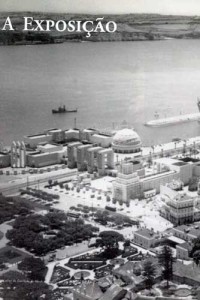
Macau was a big deal at the exhibition – the guide book for the exhibition mentions “Macau Road” – ‘Turning right and going downhill, you follow the Macau Road on which has been recreated a busy street typical of the Portuguese city in China.’ Macau Road was close to similar exhibits on Timor and Mozambique. This is all now the Garden of Ultramar and the entrance to the Road still exists…
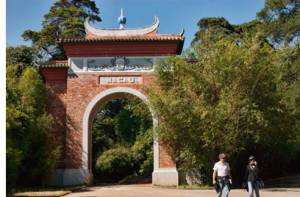 Nearby a “Colonial Restaurant” served typical meals prepared by Chinese and African cooks. Within Macau Road was also a permanent exhibition of the works of the painter Chiu Shiu Ngon. Now the source I saw may have the name wrong, but I can’t find any references to this painter – so if anyone knows anything do let me know….
Nearby a “Colonial Restaurant” served typical meals prepared by Chinese and African cooks. Within Macau Road was also a permanent exhibition of the works of the painter Chiu Shiu Ngon. Now the source I saw may have the name wrong, but I can’t find any references to this painter – so if anyone knows anything do let me know….
Posted: November 12th, 2015 | No Comments »
This exhibition is displayed within a shipping container on Bristol’s dockside outside M Shed café…
12 November—22 November 201; 10am-5pm; free
A Trading Journey
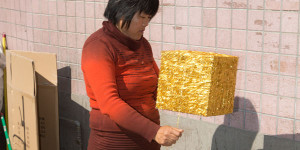
A contemporary photographic exhibition looking at the relationship between trading activities and their environment in Guangzhou, China – Bristol’s twin city.
Guangzhou (Canton) has been an important point of contact between China and Europe since the early eighteenth century with all foreign trade restricted to just this port city.
Inspired by themes that emerge from within the 34,000 images digitised by the ‘Historical Photographs of China’ project, Bristol based photographer Alejandro Acin has photographed some of the most important markets in Guangzhou. The aim was to create a visual narrative based on the routine trading activities of market traders and their relations with their environment.
The exhibition will be displayed within a shipping container on the city’s dockside linking to Bristol’s own trading past.
The project is part of the AHRC-funded British Inter-university China Centre’s cultural engagement activities.
More here
Posted: November 11th, 2015 | No Comments »
Late 1933 was a troubled time in Shanghai. The city was still effectively clearing up after the January 28th Incident (or the First Sino-Japanese War) in 1932. That battle had seen the first aerial bombing of civilian targets – five years before Guernica. The main damage was to the northern train station, Hongkew and other areas north of Soochow Creek meaning severe bomb, and resultant fire, damage both in the northern portions of the International Settlement and outwith in portions of Chinese-controlled Shanghai beyond Hongkew.
Over a year later Henry Moon (known to his friends as Harry) was found dead, shot through the heart, on the Kiangwan Road (now the Jiangwan Road). Kiangwan Road was largely settled by foreigners, though was technically outside the boundaries of the International Settlement to the north, in the so-called Northern External Roads between the railway line and Hongkew Park (now Lu Xun Park). Foreign police did venture up there and the Shanghai Municipal Council partially supplied gas and electric. There were no immediate clues as to who had shot him or why.
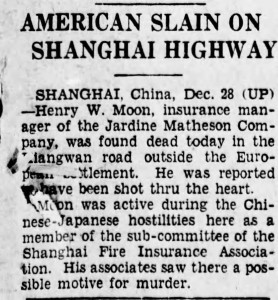
However, Henry Moon was a man of some importance in the aftermath of the 1932 attack on the city. Erroneously described as an American in this newspaper article, he was in fact (i’m pretty sure) from London. He was the insurance manager for Jardine Matheson, one of the largest insurers of property, commercial and residential, in the city. During the hostilities of 1932 he was on the sub-committee of the Shanghai Fire Insurance Association which represented all 142 foreign insurance companies operating in Shanghai (76 British, 19 American and 16 Japanese and a few others) and based itself on the rules established by the Fire Offices’ Committee of London. Under the so-called War Risks Clauses of most Shanghai insurance policies the Association refused claims totaling millions of dollars in the aftermath of the fighting. Naturally a large number of property owners were not happy.
To fight this decision an Association of Fire Insurance Claimants was formed by Yu Hsia-ch’ing, President of the Shanghai Chamber of Commerce and a well-known organiser of anti-Japanese boycotts in the city in 1931. Following the example of Henry Moon and his association, the Chinese courts in the city dismissed insurance claims with Chinese firms citing the war clauses argument. This meant a whopping $73,500 (Mexican) in claims was thrown out of court. There were demands for reparations made upon Japan for destroyed property, but Tokyo never responded to this appeals.
So who killed Henry Moon? Who disliked him enough to follow him or lure him out to Kiangwan Road and shoot him straight through the heart, presumably killing him instantly. Well, take your pick – 25% of Shanghai factories were damaged in some way by the war of 1932; half of those totally and many small businesses never recovered and saw their owners bankrupted as they couldn’t get an insurance payout. When the Chinese Courts followed the lead of the foreign Association 4,200 Chinese claimants saw their own claims with Chinese insurers rejected. And that’s an awful lot of suspects!!

The Jardine Matheson building at No.27 Bund, the location of Henry Moon’s office in 1933.
Posted: November 10th, 2015 | No Comments »
Of course we saw similar headlines in the 1990s and 2000s – not so much today….this news in from 1931…

Posted: November 9th, 2015 | No Comments »
Tea on the Great Wall is the new memoir of 1930s Shanghai from Patricia Luce Chapman…
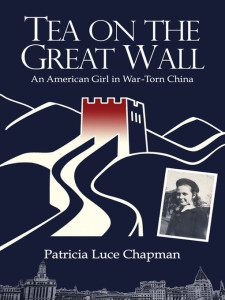
Shirley Temple in Wonderland meets Chinese opium addicts, Nazis, and Japanese bayonets “Tea on the Great Wall” is a young American girl s account as the world falls apart in 1930s China. Patricia Luce Chapman s memoir is full of the color and feel of living as a foreigner in a Chinese world, the encroachment of the Japanese, and the takeover by the Nazis of the German school in Shanghai that she attended.”
Posted: November 8th, 2015 | No Comments »
I’m afraid I know very little about this, so anyone who knows anything more, or can correct anything here is welcome to get in touch…
The Free Austria Movement, or the Freie Österreichische Bewegung (FAM), was a largely UK based organisation of Austrian exiles during World War Two that included a broad range of anti-Nazi Austrians, including communists. Their activities ranged from fund raising to broadcasting back into Austria via the BBC. They also established various sections outside the UK, certainly one existed in Australia and also, it seems, in Shanghai. The Shanghai FAM seems to have been partly run by two men – Felix Gruenberger and Arthur Zanker. Zanker was a Jewish specialist in children’s diseases, born in Silesia, who worked in Vienna before the war. He eventually emigrated to England (where he died in 1957) but came via Shanghai where he seems to have been briefly, but importantly, involved in the FAM organisation there. Afraid I don’t know much else about him. Neither do I know much about Gruenberger, although I believe he was also a doctor, had studied medicine in Vienna and arrived in Shanghai in 1939. I know a little more about Gruenberger as he wrote a paper in 1948, published in 1950 in the journal Jewish Social Studies, entitled The Jewish Refugees in Shanghai (you can track it down on JSTOR).
Anyway, my introduction to FAM in Shanghai was very different and much nastier. Looking at documents relating to the Nazis in Shanghai during the war I noticed the name of one SS-Gestapo agent in the city called “Bettleheim” who was himself an Austrian Jew, and a doctor (and so presumably a colleague/competitor of Zanker and Gruenberger’s in Shanghai) who worked within the Free Austrian Movement but was informing on their membership and activities to the Shanghai Gestapo throughout. What became of him I do not know.
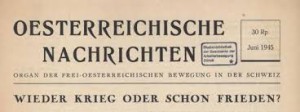 A FAM newspaper in Switzerland
A FAM newspaper in Switzerland
Posted: November 7th, 2015 | No Comments »
CHINESEÂ PROPAGANDAÂ POSTERS 1949-1979
by YANG PEIMING OF SHANGHAI’SÂ PROPAGANDAÂ ART MUSEUM
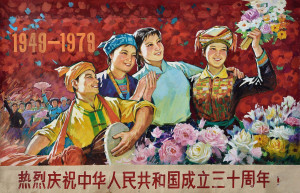
WHAT: “Nov.14 RASBJ TALK:Â CHINESEÂ PROPAGANDAÂ POSTERS 1949-1979 by YANG PEIMING OF SHANGHAI’SÂ PROPAGANDAÂ ART MUSEUM
WHEN: SATURDAYÂ Â NOVEMBER 14THÂ 4:00PM-7:00 PM
WHERE: Capital M 北京市å‰é—¨æ¥è¡Œè¡—2å·3层 map here
3/F, No.2 Qianmen Pedestrian Street (just south of Tiananmen Square)
Tel: 6702-2727
COST: RMB100 for RASBJ members. RMB130 for non-members (includes the cost of one drink)
RVSP:Â events@rasbj.org
Chinese propaganda posters are witnesses to the swings of politics and history, catalysts for other forms of Chinese art, and reflections of the hopes, dreams and fears churning in Chinese society. Yang Peiming, the curator and founder of the Shanghai Propaganda Poster Art Center, has collected over 5000 posters made between 1949 and 1979. RASBJ brings curator Yang to Beijing to display remarkable works from his collection, and to explain how Chairman Mao and his team shaped the art and minds of China for 30 years.

Posted: November 7th, 2015 | No Comments »
The second (and final I think) weekend of this years Shanghai Lit Fest – some events of possible interest to China Rhymers:
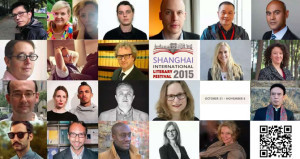
Saturday November 7 – 11am – Douglas Clarke on Gunboat Justice

Saturday November 7 – 1pm – Leta Hong Fincher on Leftover Women

Saturday November 7 – 3pm – Cai Jindong on Beethoven in China
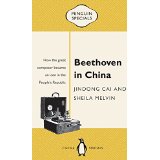
Sunday November 8 – 1pm – Andrew Field on Shanghai’s evolving nightscapes

 Nearby a “Colonial Restaurant” served typical meals prepared by Chinese and African cooks. Within Macau Road was also a permanent exhibition of the works of the painter Chiu Shiu Ngon. Now the source I saw may have the name wrong, but I can’t find any references to this painter – so if anyone knows anything do let me know….
Nearby a “Colonial Restaurant” served typical meals prepared by Chinese and African cooks. Within Macau Road was also a permanent exhibition of the works of the painter Chiu Shiu Ngon. Now the source I saw may have the name wrong, but I can’t find any references to this painter – so if anyone knows anything do let me know….












